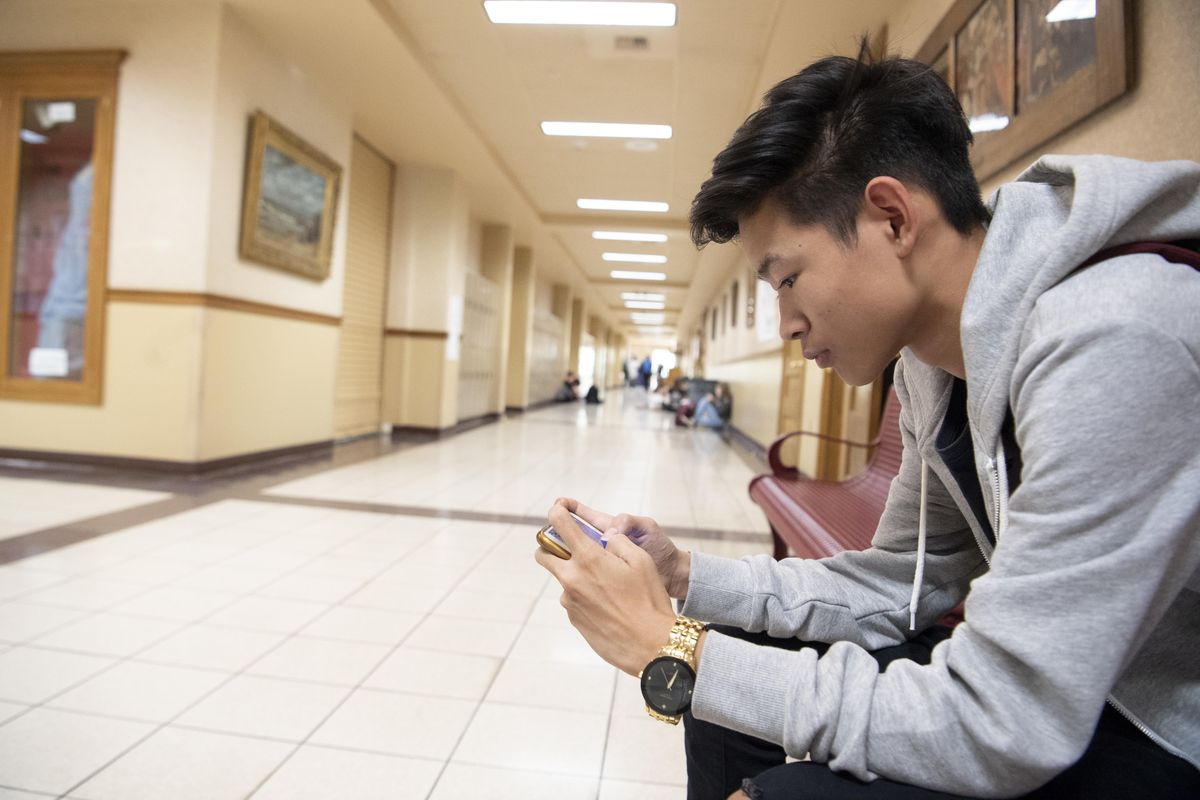Bagged, tagged and out of reach: Spokane teachers respond to in-class cellphone usage

By the end of last year at Lewis and Clark High School, the photography students in Mike Lee’s class were losing their focus.
Lee had a good notion why.
“It was the cellphones,” said Lee, who after 13 years in the field has developed a keen eye for teenage behavior.
Then again, it’s a trend that’s hard to miss.
In a national report released this week, the nonprofit group Common Sense Media found that 70 percent of teens are using social media, compared with 34 percent only six years ago.
Most popular is the ephemeral messaging service Snapchat, which is used by 63 percent of teens nationwide. Right behind is Instagram at 61 percent.
In Lee’s classroom that meant temptation, as cellphones were readily available once assignments were completed.
As a result, the quality of schoolwork suffered.
A recent California study of several hundred high school and university students found the average student studies for fewer than six minutes before switching tasks and is often distracted by technology.
“I was seeing more and more that students would quickly get through their work so they could get distracted by their phones and have more screen time,” Lee said.
Like most districts, Spokane allows schools and teachers considerable leeway in the regulation of phones. While in-class use is generally discouraged, in certain cases – such as a language class – personal devices may be allowed.
Often, it falls to the educator to pick the battle. And driven by his students’ distraction, Lee decided last summer “to do something different.”
On the first day of school, he unveiled a cabinet with 30 small cubby holes. At the beginning of class, students lock their phones in a compartment and retrieve them when class is dismissed.
As a bonus, each cubby contains an outlet for charging.
Purchased on Amazon, the cabinet might best be described as a holding cell, though no one is calling it that.
“I think it’s genius,” said Spokane Public Schools superintendent Shelley Redinger, whose son is in one of Lee’s classes.
“I think some of the students are relieved that it’s not a distraction,” Redinger said.
Some students would rather be left to their own devices, but for others, removing the temptation is half the battle.
“I try not to use it too much, mostly to ask my friends, ‘Where are you at?’ ” said Jessica Chasse, a junior.
“I normally don’t use my phone in class,” Chasse said.
However, there’s a new normal this year at LC for students who abuse their cellphone privileges. In most classes, phones must be silenced and stored unless requested by the teacher for classroom activities.
Phones used without teacher approval will be “bagged and tagged” for the duration of the class.
After class, the phone is returned to the student, but the tagged bag goes to the student office for administrative response.
In prior years, phones were simply confiscated.
“I think this approach is better in terms of distraction,” LC principal Marybeth Smith said. “This way, the student knows it’s still there.”
Jeffrey Knutson, the senior producer for Common Sense Education’s teaching strategies project, said schools must use a critical standard for judging whether students are engaging with the devices in meaningful ways.
“There’s a significant difference between parking your child or all of your students in front of a screen to sit and absorb, and engaging with a screen or using a screen to engage with others,” Knutson said.